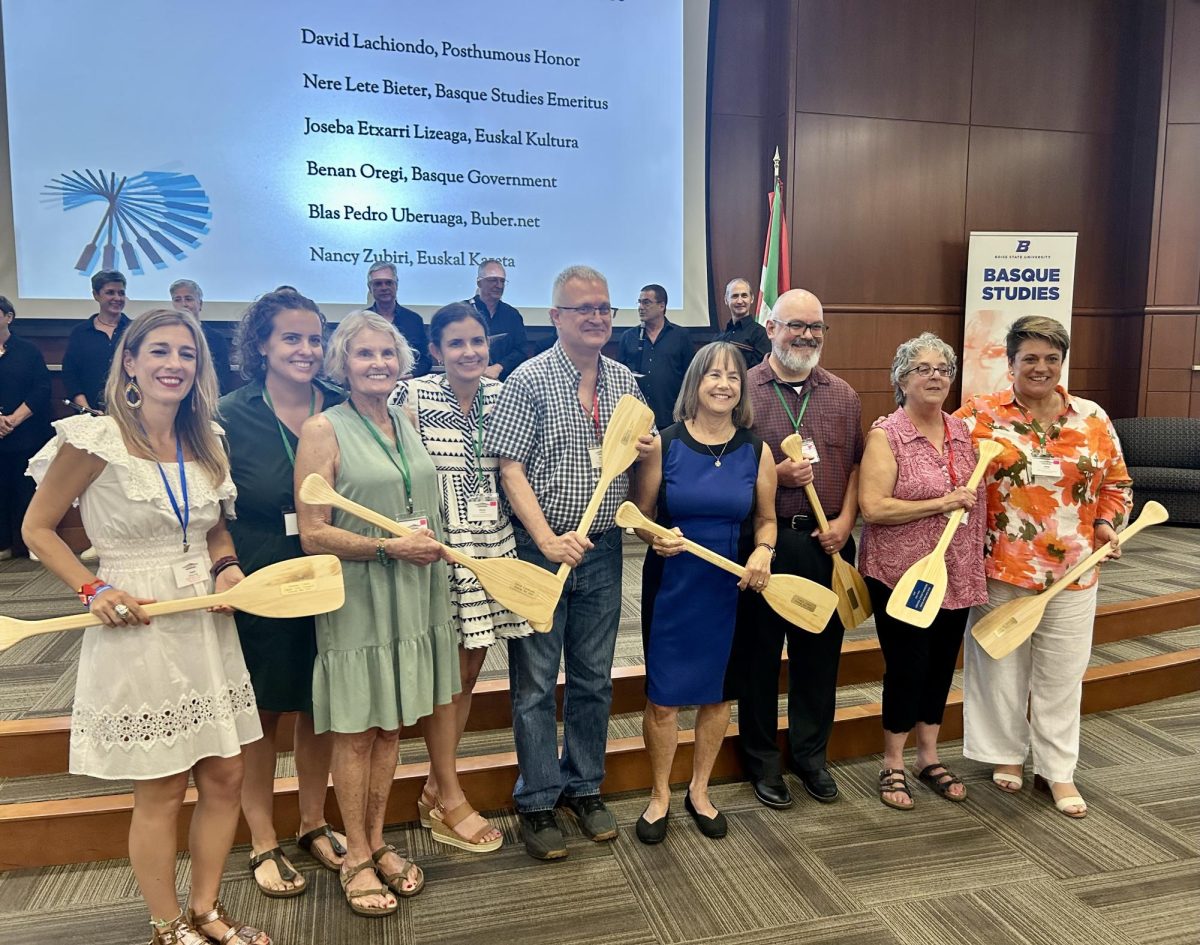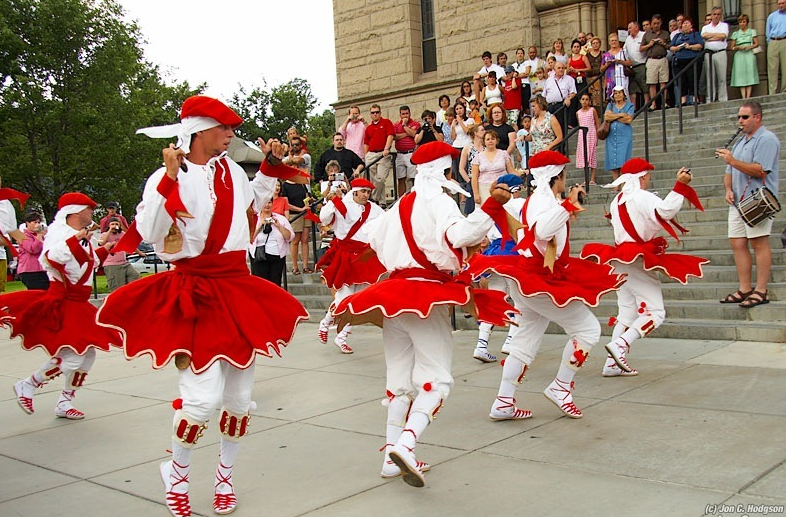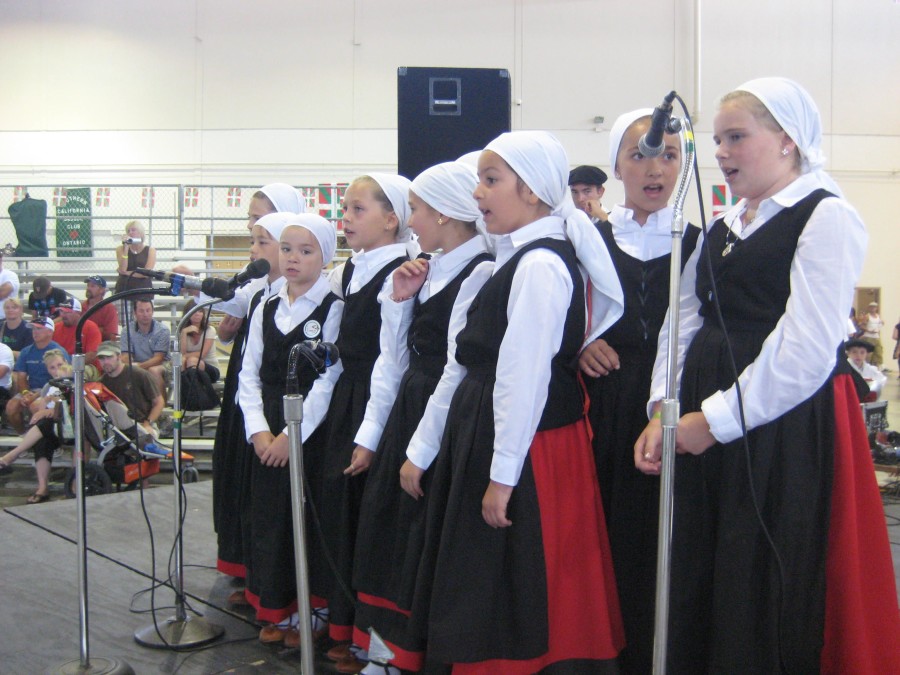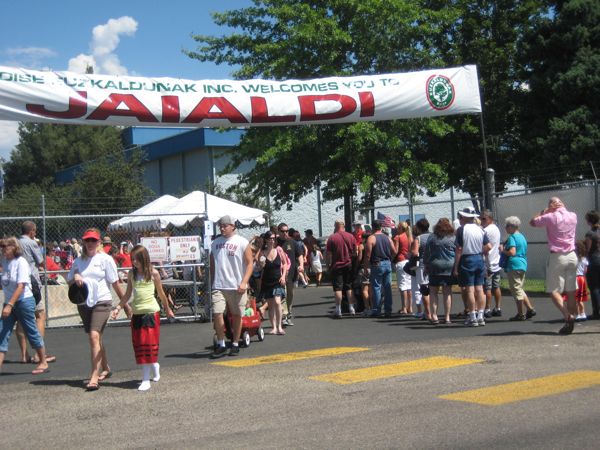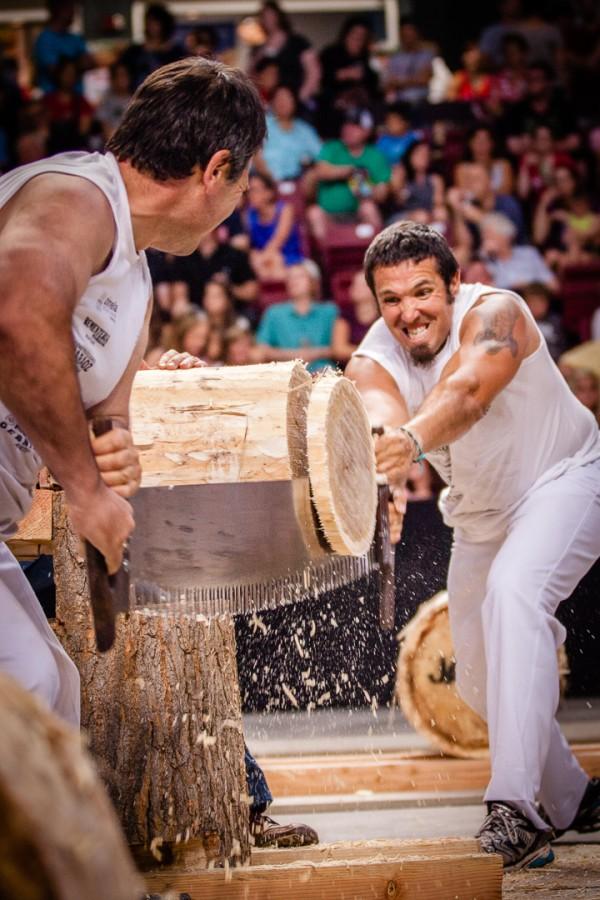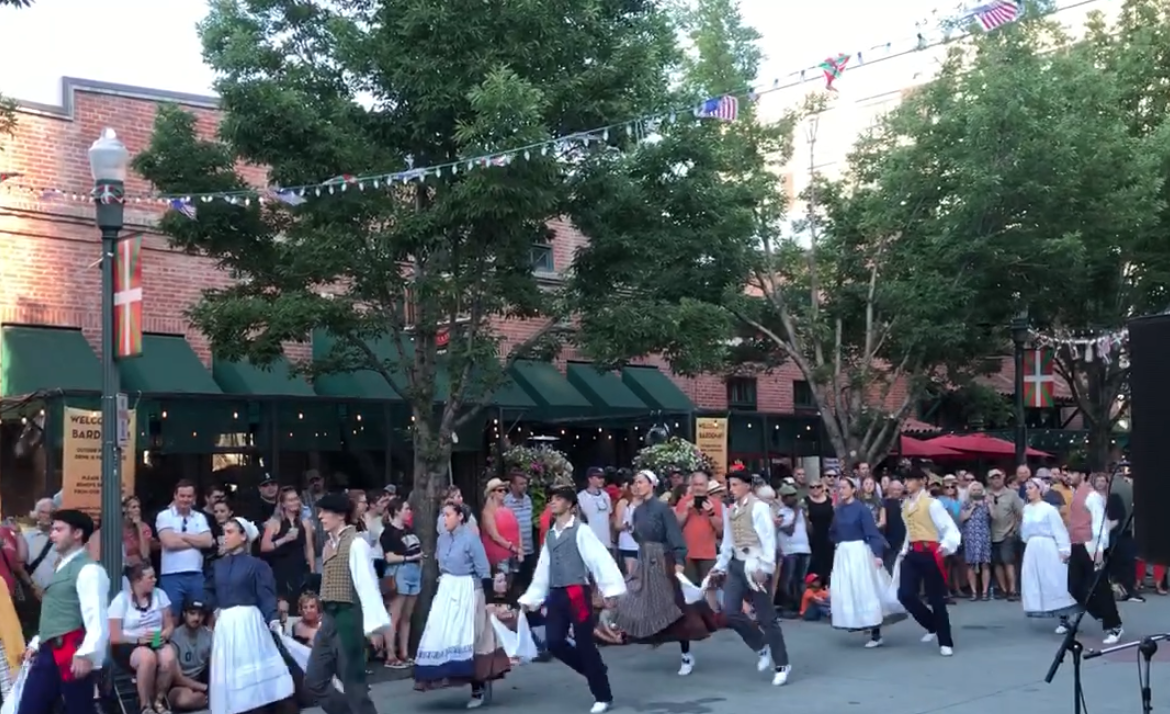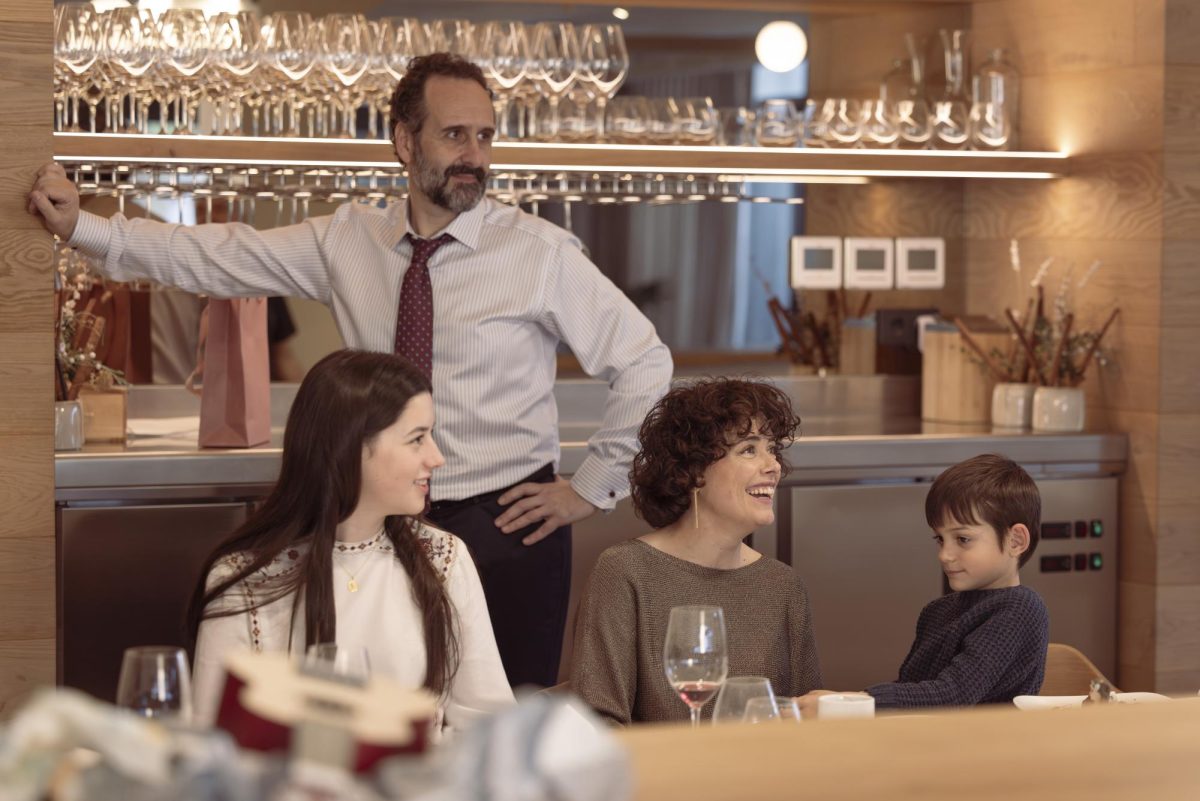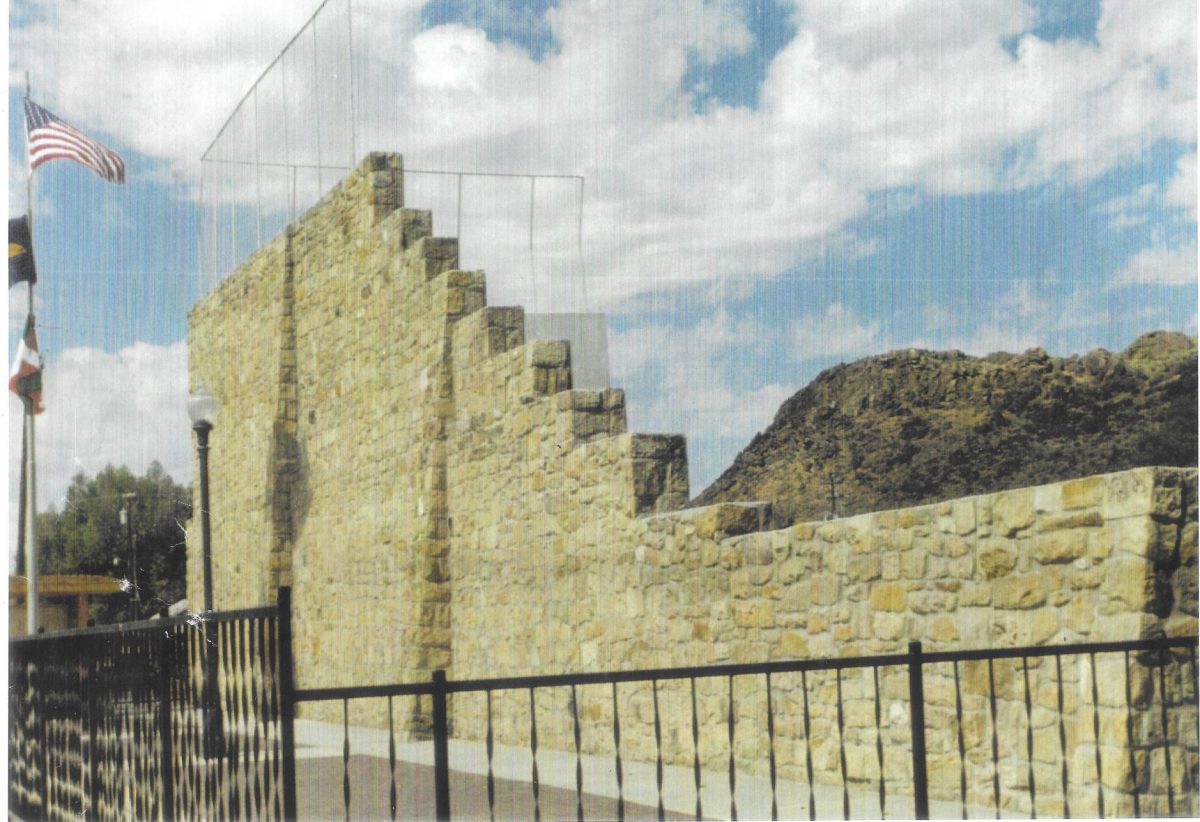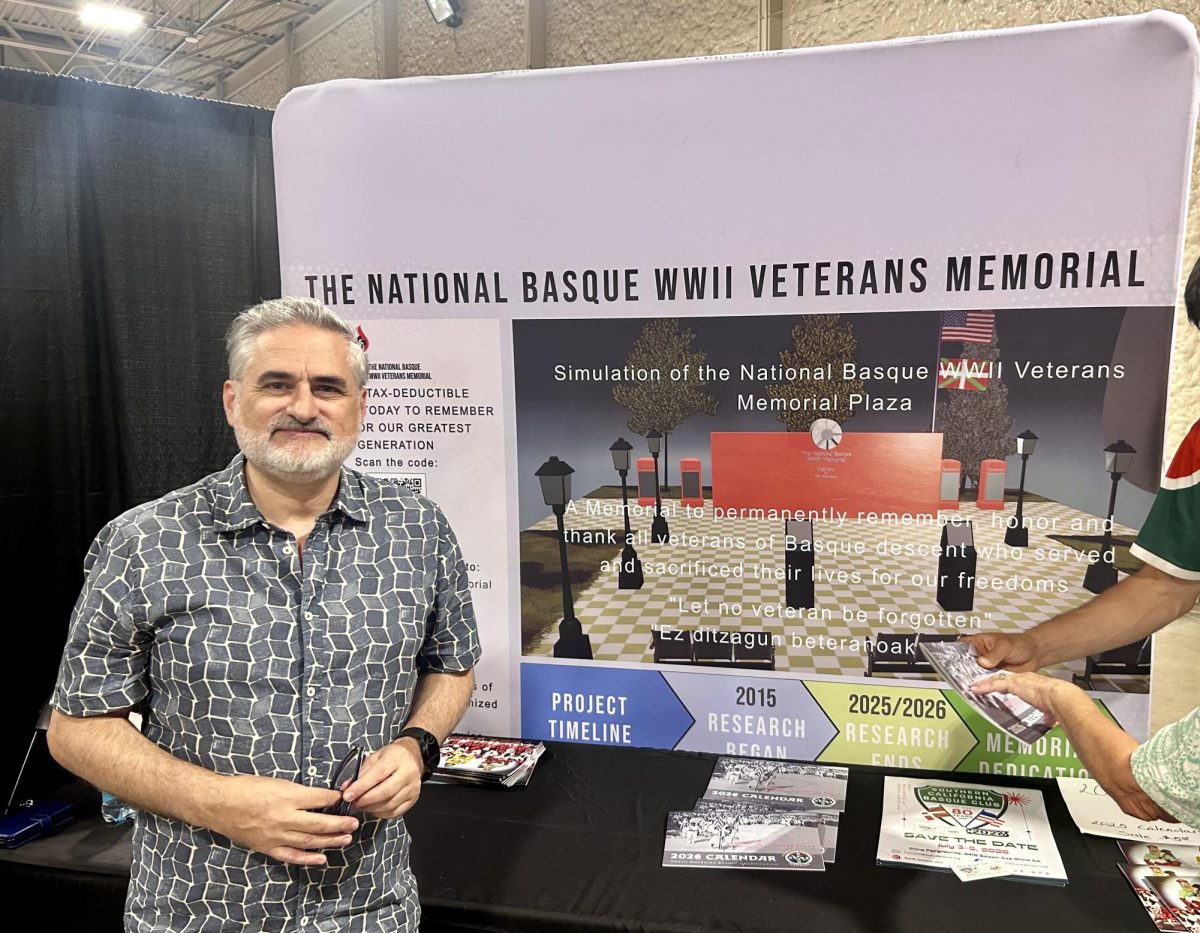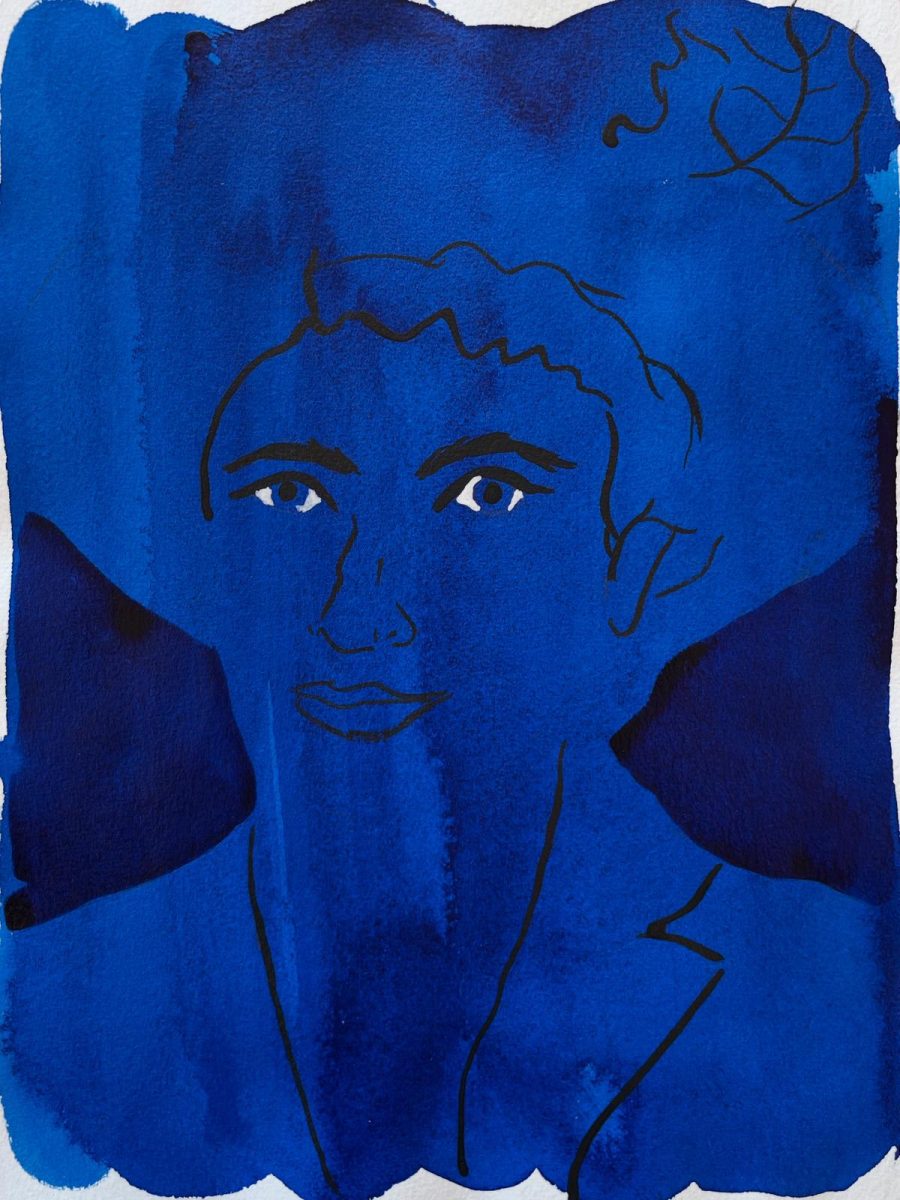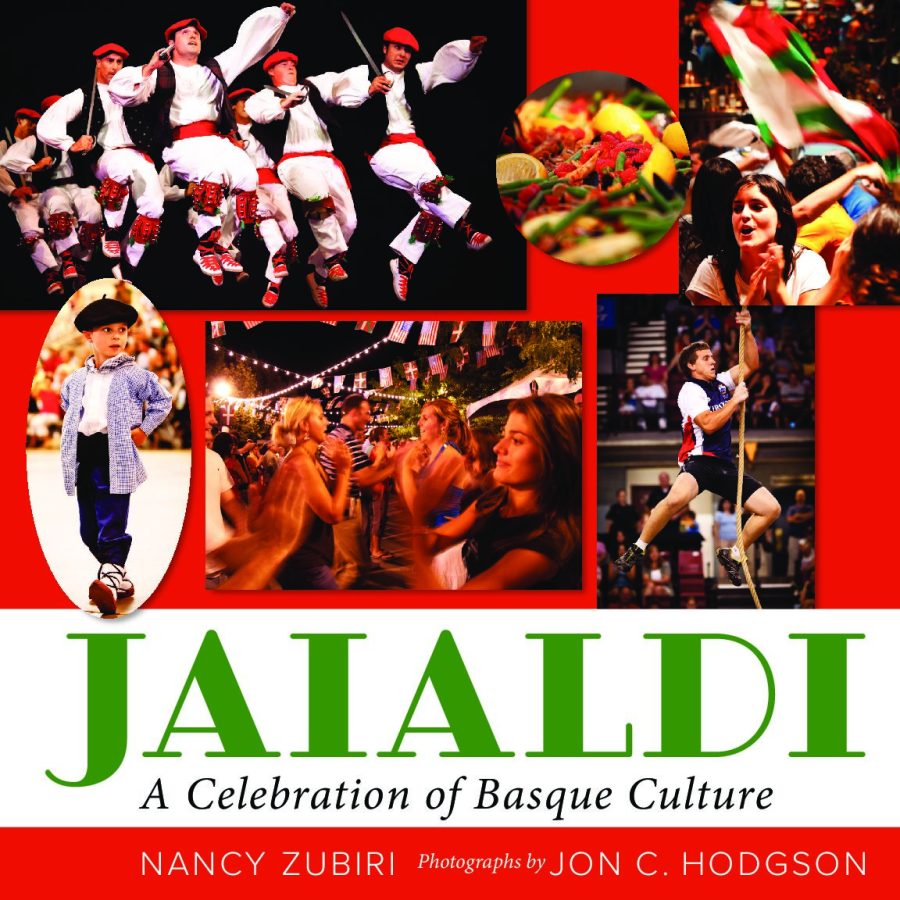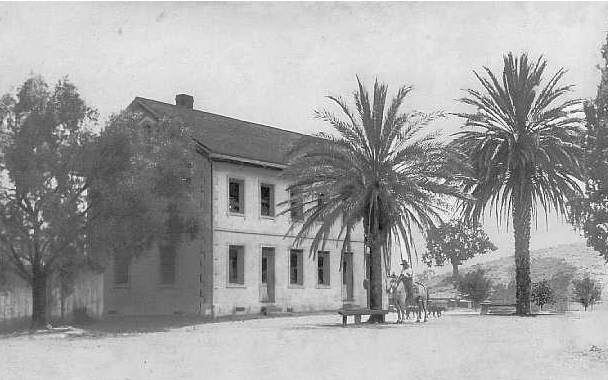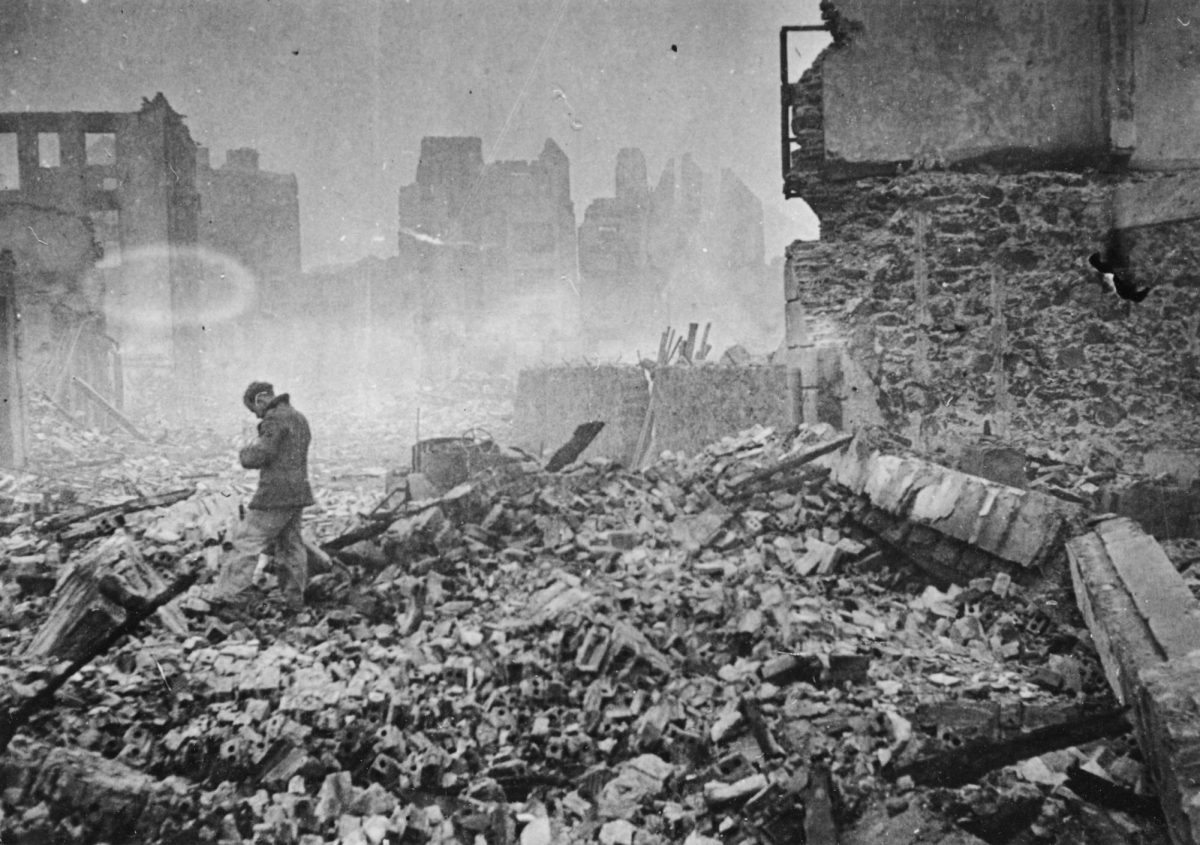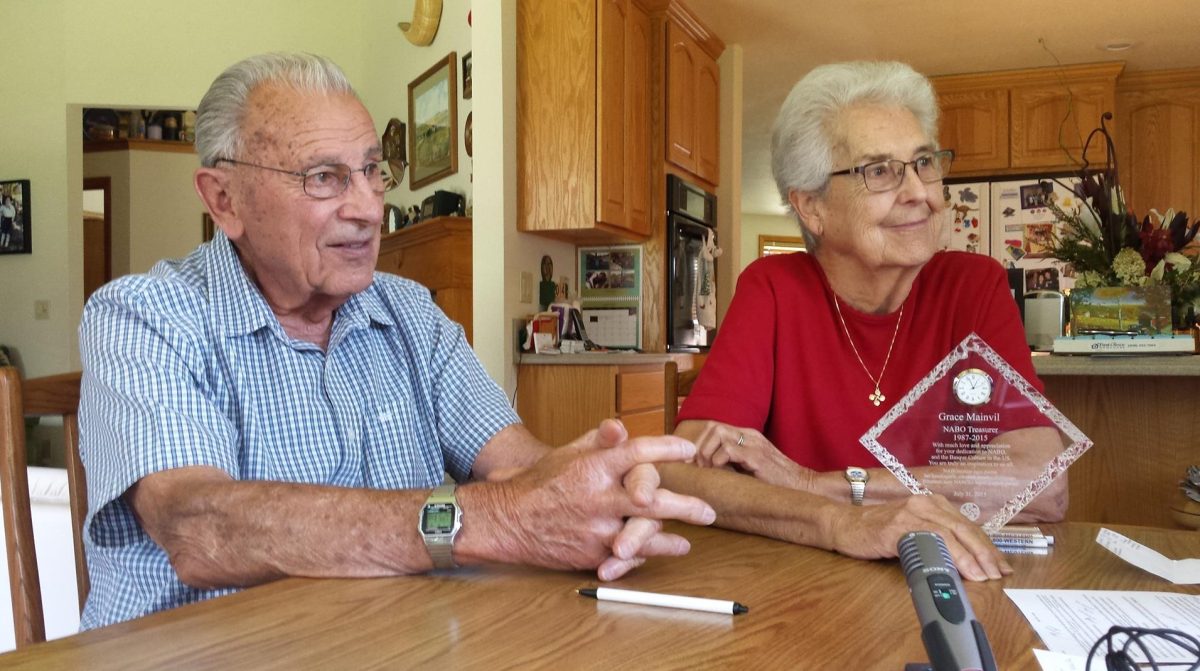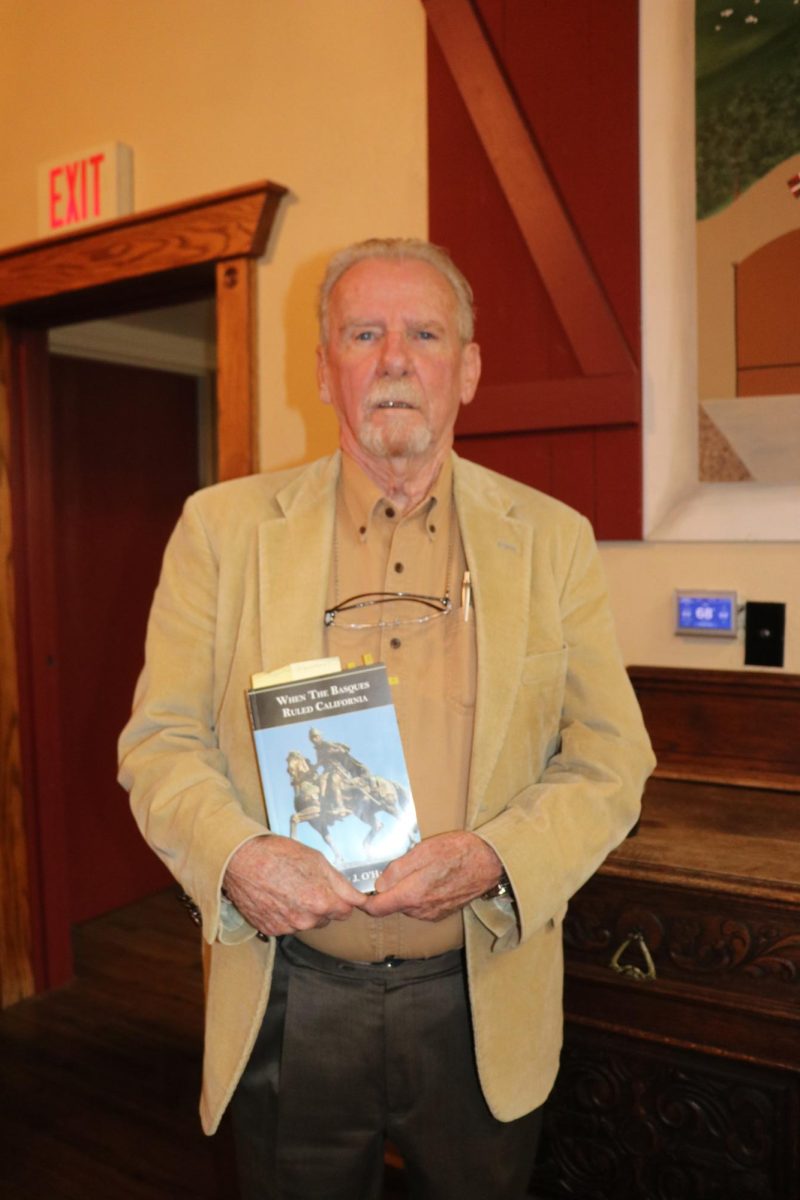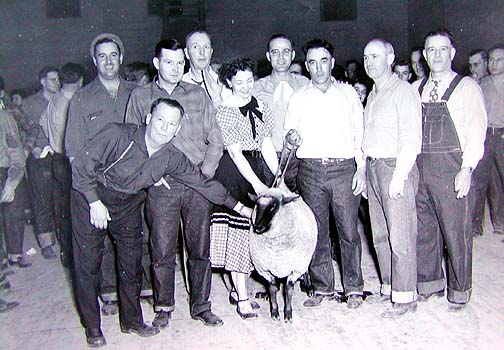A long-awaited series of projects to create an interpretive walking tour of Basque historical and cultural landmarks in downtown Boise be a reality when thousands of visitors descend on the city for Jaialdi 2010.
For about the past five years, members of Boise’s Basque community have been working to design interpretive signs, as well as create a mural of sheepherder tree carvings, all of which will anchor the new walking tour in the area near the Basque Block.
Visitors will stroll past buildings that once housed the Church of the Good Shepherd and the Star Rooming House. They can walk past the existing mural of Basque traditions and a new mural featuring arborglyphs, or tree carvings by sheepherders, at the Basque Block. All along the way, they will be guided by interpretive signs with text and photos that explain the importance of each site in relation to the Basque community.
“This has been in the works for years, but it’s all finally coming to fruition,” said Boise State University professor John Bieter, who has been helping direct the effort.
The walking tour will be unveiled on June 3 during the popular “First Thursday” celebration held in downtown Boise. (Updated information: The walking tour unveiling was changed to Thursday July 1.)
The dedication will be the culmination of several projects that all gelled together. The different efforts, which have been ongoing for as long as five years, were completed with the funding and assistance of the Basque Museum and Cultural Center, the Boise Arts and History Department, Boise State University, the Boise Weekly, the Cenarrusa Foundation for Basque Culture and the Idaho Humanities Council.
The mural of Basque arborglyphs will be made from ceramic tile and be erected at the historic boardinghouse that was once operated by José and Hermengilda Uberuaga, which is now part of the Basque Museum. The 4-foot-by-6- foot work of art will feature replicas of carvings etched by herders in Idaho’s aspen groves.
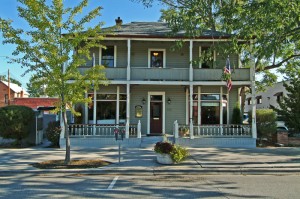
The genesis for the project began when Audra Hoyt, one of Bieter’s gradute students in the BSU Basque Studies Program, began documenting carvings in Idaho’s aspen groves, according to Dave Green, a Boise graphic artist and web designer who is spearheading the mural effort.
Sheepherding was a solitary life. The majority of Basque men, who came to the American West in the 1800s and 1900s, became herders, tending to their flocks in the mountain meadows and desert plains across the Great Basin. Probably out of loneliness, many carved images onto the soft white bark of aspen trees, which grew in the meadows where the herders camped.
Hoyt documented a number of carvings, which were written in Euskera, the Basque language. Green said he received a grant from the Boise Weekly to begin the mural, which was based on Hoyt’s research. Others became involved, such as Basque Museum Director Patty Miller, Boise State Professor Alberto Santana and Earl Worl. They helped select additional carvings, among other details, according to Green.
Green and Boise artist Izar Bicandi collaborated on the design of the mural. At times, Green recalled in a recent interview with Euskal Kazeta, producing the work was a moving experience, especially when he came across carvings made by relatives of some of his best friends in Boise.
“I feel gratified,” Green says of his efforts. “And I feel happy to be able to contribute.”
The mural will feature a key to each carving, along with interpretations and explanations. The project, Bieter says, will help highlight an important piece of history about Basque sheepherding for visitors who might not otherwise hike into the forests.
“We want to bring the trees to the people,” Bieter says.
One of the interpretive plaques will be at The Church of the Good Shepherd, at 5th and West Idaho Street, Bieter said.
Formed around 1919, the church was the first Catholic church established for Boise’s Basque congregation. During that era, Father Bernardo Arregui presided over marriages, according to “A Travel Guide to Basque America,” written by Euskal Kazeta editor Nancy Zubiri.
Although many Boise boardinghouses have been razed, the building that once housed the Star Rooming House is still standing at 512 West Idaho Street. The boarding house, which is on the National Register of Historical Places, was operated by Basques around the beginning of the 20th century.
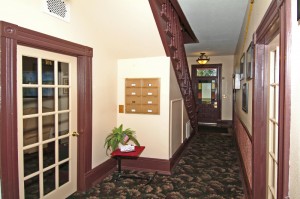
The Star will be another stop along the tour, Bieter says.
A few blocks away, visitors will encounter a sign at the Basque Mural on the Basque Block.
“People have all kinds of questions about what does this mean,” Bieter says of the images on the mural, which depict life in the Basque Country, including dancing and weightlifting. But after the new signs are erected, he says, visitors will no longer have to wonder about the landmarks they are seeing.
The walking tour will be good news for the throngs that converge on Boise for the huge Jaialdi 2010 international Basque festival. As many as 30,000 people from Basque communities in North America, Europe and Latin America will be in town between July 27 and August 1.
Related articles, video:
Basque sheepherder tree carvings threatened
Basque sheepherder monument in disrepair
Basque Sheepherders in the Great Basin


